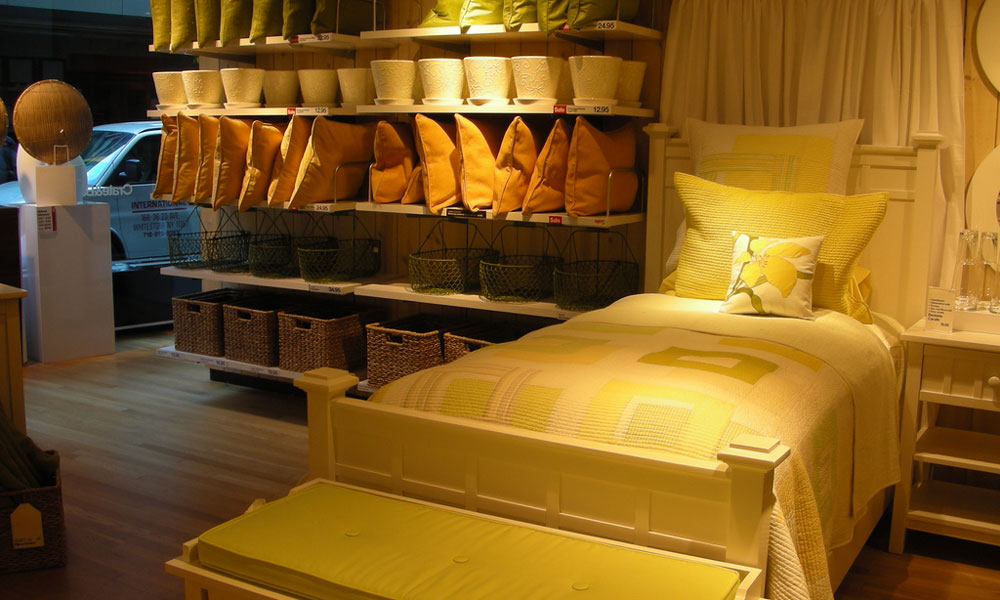
Where Is Your Membership Showroom?
Big online retailers are finding that real-world showrooms have an important influence on customers' buying habits. How can your association put your membership experience on display?
If only your membership package were as handsome as the Taraval Chair with Oak Base.
On the Crate & Barrel website, you can view a gallery of high-resolution, full-color photos of the Taraval. And, if that’s not enough for you, a button just below the photos invites you to “See It in Your Store,” which presents information for the Crate & Barrel locations nearest to you, so you can go see the Taraval in person and take it for a test sit.
It’s 2015, and we can buy just about anything online now. But, as Wharton School professor David Bell told attendees at last week’s 2015 Digital Now conference, location and buying experience still matter. A lot.
There’s that potential barrier of not really understanding what the benefits are, what the value is, unless they get some kind of visceral experience with it.
Bell, author of Location Is (Still) Everything: The Surprising Influence of the Real World on How We Shop, Search, and Sell in the Virtual One, shared with the Digital Now audience some results from research that he and colleagues conducted for Crate & Barrel. The retailer added an option to its website that allowed visitors to buy a product online and pick it up in store (BOPS), available to online visitors within 50 miles of a Crate & Barrel location. Tracking visitors and sales closely, they found that the BOPS option drove online traffic up but online sales down; meanwhile, in-store sales went up, both on items available on the website and other items in the store.
Warby Parker, an eyeglasses retailer that until recently conducted its business entirely online, found a similar dynamic when it opened showrooms at either standalone locations or as branded displays inside department stores, Bell says. The real-world showrooms increased online sales to customers in those areas (possibly simply via enhanced brand awareness), and, while home try-on orders in those areas decreased, they became more efficient, converting more try-ons to sales.
Unfortunately, a membership package isn’t a pair of Crane Ti frames in Newsprint Grey, either. Can the world of online and offline retail inform how associations sell memberships?
I asked Bell about this after his keynote, and he suggested that associations should heed retailers’ lessons in the importance of buyers getting to experience the nondigital attributes of their products.
“A membership is what we call in marketing an ‘experience good’ or a ‘credence good.’ When you search for a McDonald’s hamburger or a Starbucks coffee, you know what you’re going to get before you get it. An experience good is like belonging to an association or getting an MBA; you don’t really know what it’s like until you’re in it,” he says. Some kind of in-person experience could be vital to the join decision “because there’s that potential barrier of not really understanding what the benefits are, what the value is, unless they get some kind of visceral experience with it.”
It’s easy to think of membership in an association as something intangible and thus not easily shown off in a physical way, but that might miss the potential of direct interaction with your association’s community. Your local events—whether chapter meetings, simple networking gatherings, short education programs, or multiday conferences—could be leveraged much more purposefully in the join decision for prospective members. If you can get them to attend and experience your membership community firsthand, that’s your chance to “showroom” membership in your association.
Of course, not every potential member will live in close proximity to your event locations or even many other members in your association. As Bell says, “location defines your offline options and thus your need for online options.” In other words, a prospect’s location should dictate how you sell them on joining, even if much of your benefits are virtual and can be experienced anywhere. As Crate & Barrel and Warby Parker found, with more buying options both online and offline, customers can better select their buying styles, making each of those options more efficient because they’re better targeted.
A couple other lessons from Bell and the world of e-commerce:
Offline word of mouth is just as important to online sellers as offline ones. Bell shared the story of Diapers.com, acquired by Amazon for more than half a billion dollars in 2010. As it tracked its new customer acquisition patterns as it grew following launch in 2005, it found that, when sales began in one geographic area, they soon spread to immediately adjacent geographic areas. Remember, this is a business that sells diapers and other baby gear entirely online, but brand awareness nonetheless grew in a real-world, physical pattern.
Scale is crucial, so online retailers “leverage outsize influence” to get current customers to recruit new ones. Startup Jet.com, which hopes a membership model will be the secret to challenging Amazon, offered 100,000 shares in the company to its top-ranked referrer in a three-month contest; the top 10 finishers got 10,000 shares, while the top 10,000 got six months of free membership and the top 100,000 got pre-launch access. Bell says referral programs are doubly beneficial because new customers brought in through referrals have higher average lifetime value and are more likely to drive more referrals themselves.
“The more challenging thing is how do you know what the heck is the right carrot?” he says. “There’s probably no hard-and-fast formula to do it, but it’s something you would experiment around. You go in with these two things: the structure of the rewards—intrinsic or extrinsic—and the break points.”
How can these lessons from online retail influence your association’s membership marketing? Do you offer a “showroom” of any sort for prospects to experience membership? How does geographic location affect how you recruit or engage members? Please share your thoughts in the comments.
Crate and Barrel offers a great example of the showroom mindset in action. (thinkretail/Flickr)






Comments